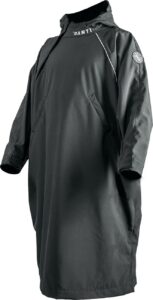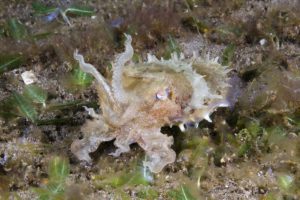Nicolas Remy ventures to New Caledonia to explore some of the more-remote reefs in this part of the world
Photographs by Nicolas Remy
Last November, I had the pleasure to visit New Caledonia – it was the first time for me and, of course, I went there for diving. This was a different sort of dive trip though – I was joining an expedition organized by the New Caledonian government, to document some remote reefs that had been rarely dived.
The Natural Park of the Coral Sea
In 2014, New Caledonia has established the Natural Park of the Coral Sea, where all photos of this article were taken. With 1.3 million square kilometres, it encompasses a diversity of ecosystems, from shallow reefs to habitats 4,000m deep, and several uninhabited islets. Among these, we visited the reefs around Walpole island and Astrolabe.

These three reef systems, especially the latter two, have been very little dived and explored, and I was particularly interested to dive Astrolabe, because these reefs has been categorised as a ‘récif sauvage’ (wild reef), which means it’s part of the 1.5% of global coral reefs that have received the least impact from human activities. As such, it has been given the highest protection status in 2018: no entry and no-take zone.
I have to preface the rest of the article with an important note: the reefs which we visited are not accessible to the general public, and diving there requires an authorization from the New Caledonia government.
The team and mission
Onboard the Te Fetia catamaran, we had the two videographers who were creating 360 degree video footage, three underwater photographers, an underwater videographer and drone pilot, and three crew members.
We were tasked by the government to produce stills and video imagery to document these rarely visited sites, including some that had never seen a scuba diver. We left Noumea on 14 November, and spent 11 days at sea.
Walpole
After 24 hours of sailing East from Noumea, we reached the island of Walpole in the morning. What an impressive sight, visible far in the open sea. Walpole is a coral island, made of a 3.5km-long plateau that emerges 70 to 80 metres above sea level.
Its most-recent occupation was for guano mining, from 1916 to 1942, but it has been essentially uninhabited since then, save for scientific expeditions. I really enjoyed diving in Walpole’s pristine blue water, visiting a mix of gently sloping coral reefs and dramatic drop-offs, which we could fully appreciate with the crystal-clear waters: I estimate the visibility at 40 metres there, if not more.
Did you know?
New Caledonia has the world’s second biggest coral reef stretching 1,600km around the mainland forming the world’s largest lagoon. Smaller islands surround the reef, including the Loyalty Islands and the Isle of Pines.
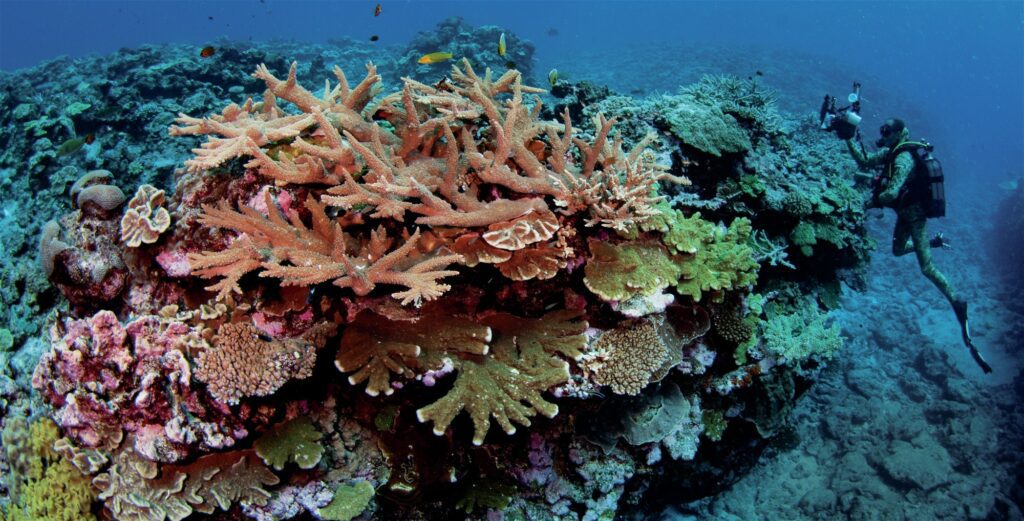
On every single dive, we had several sharks with us (silky sharks and grey reef sharks), which was a great sight. Besides, the sharks were particularly interested at us, which my dive buddy believed is due to the rarity of our kind, in these waters.
Another highlight was being authorised to set foot on the island, which allowed us to approach and photograph nesting birds and see relics of the guano mining days. Actually landing on the island was an interesting challenge: somehow, I had imagined that we would use an old jetty, but there was no such thing!
Instead, we approached with a RIB (rubber inflatable boat) and jumped onto a lower rocky platform, and quickly crawled up to drier heights. Good fun and good memories! After three full days in Walpole, we started sailing towards our next stop -Astrolabe.
Astrolabe
It took us 40 hours of sailing North-West to reach Astrolabe. In fact, we dived two distinct reefs -Petit Astrolabe and Grand Astrolabe. In Petit Astrolabe, we dived along reef walls covered in hard-corals, which spanned from 3m to 40m depth.
At the 40m mark, crossing a narrow sand plateau would take us to the top of another wall and greater depths.

Did you know?
Diving can be done year-round in New Caledonia but March-September offer the best chance to spot mantas and sharks!
At some point, my buddy and I noticed a cave at the top of the deeper wall, and went in for a closer look, only to find that we could swim through it and on the other side, we were greeted by a grey reef shark, and the mesmerizing view of the second wall plunging much deeper.
As we swam back towards the top wall, we crossed path with a dozen barracudas, and a bit later with a large dogtooth tuna.
Inside Petit Astrolabe, we also dived along some large coral pinnacle that were about 30 metres tall, nearly touching the surface, surrounded by a flat sandy bottom and isolated coral bommies here and there. Nearby, we noticed a small sandy islet inhabited by only a few seabirds, where we briefly set foot and went snorkelling in the shallows.
I was greeted by a lemon shark, and encountered several lone trevallies in search of prey. For the last two days of our expedition, we explored a few dive spots in Grand Astrolabe. Similarly to the previous reef, we did a mix of reef walls from 3m to 40m, and isolated pinnacles.
The atmosphere was a little different though – the visibility had reduced to about 15-20 metres, due to ongoing coral spawning. In terms of fish life, we again had sharks at every dive, tuna, Napoleon wrasses, butterflyfish and a number of smaller fish species. For one dive we went at the reef entrance, where we found current, but also soft corals and more abundant fish life.
Our last dive was fantastic – two large coral pinnacles ranging from 20m depth to the surface, crossed by many caves, swim-throughs and many coral fans, making for an eerie scenery. Overall, a distinctive feature of Astrolabe is the many, many cracks, caves and swim-throughs, which we found in every dive.
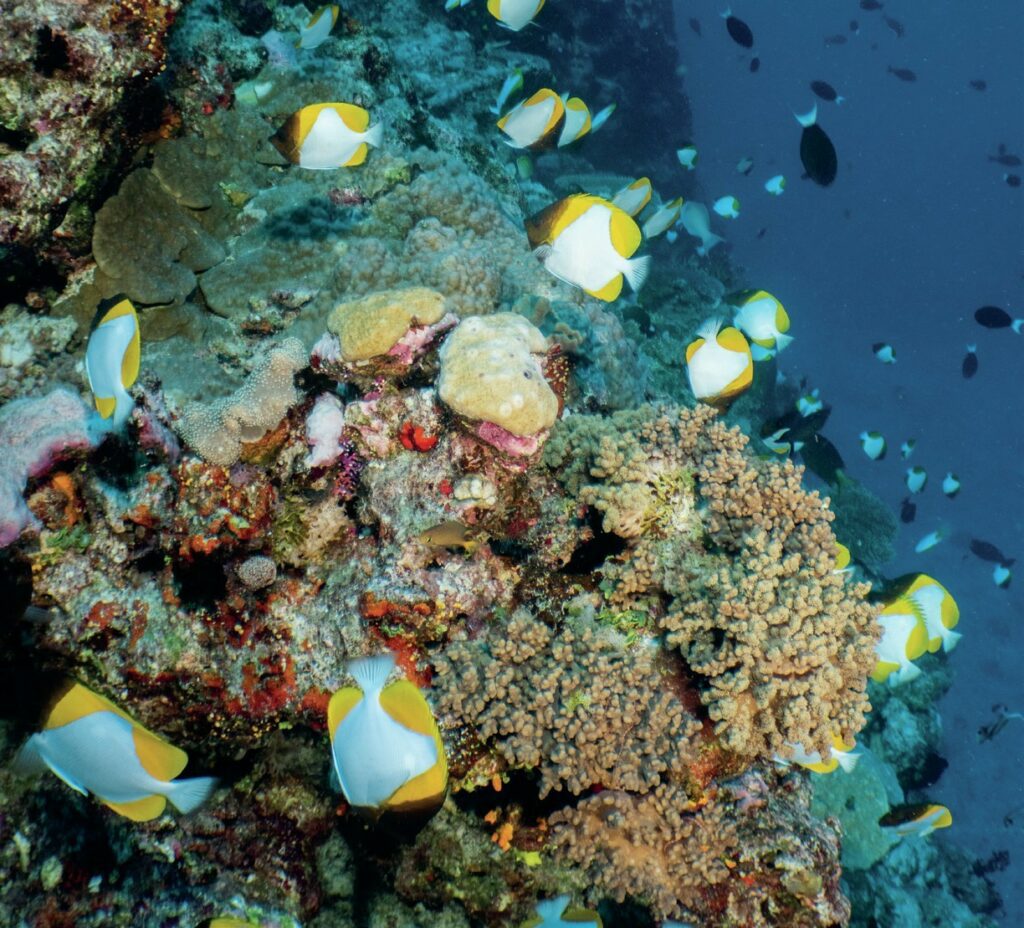
Reflecting on what we saw
During a traditional liveaboard cruise or on a commercial boat charter, you are taken to dive sites that are already known for a high concentration of marine life – you’re buying certainty, to some extent.
On this trip however, we were exploring for real – save for a few spots whose GPS coordinates we had from previous expeditions, we sometimes jumped-in because it ‘felt right’ to go there.
On the one-hand this is exciting – you get to dive in the unknown, to be the first to explore part of a reef, or penetrate a cavern. On the other hand, you may end-up diving 500 metres away from the spot where the fish life is most abundant, and somehow ‘missing the dive’ – it feels like this is what we did several times.
Overall, I wasn’t particularly impressed by the small fish life, but we did have sharks with us during every dive and whenever we jumped from the boat for a quick snorkel. This was truly heartwarming, especially in this day and age, where shark numbers have been depleted globally, due to over-fishing.
The corals looked overall very healthy, we saw mostly hard corals but would probably have seen more soft corals, had we drift-dived in the current more often. We did see broken corals on fringing reef, but this was due to natural wave action.
Last but not least, I can’t remember seeing a single piece of plastic or human trash during our dives in Walpole and Astrolabe. There is no denying that plastic pollution is a global issue, and currents can carry plastic virtually anywhere, but it felt like Walpole and Astrolabe had been spared from that.
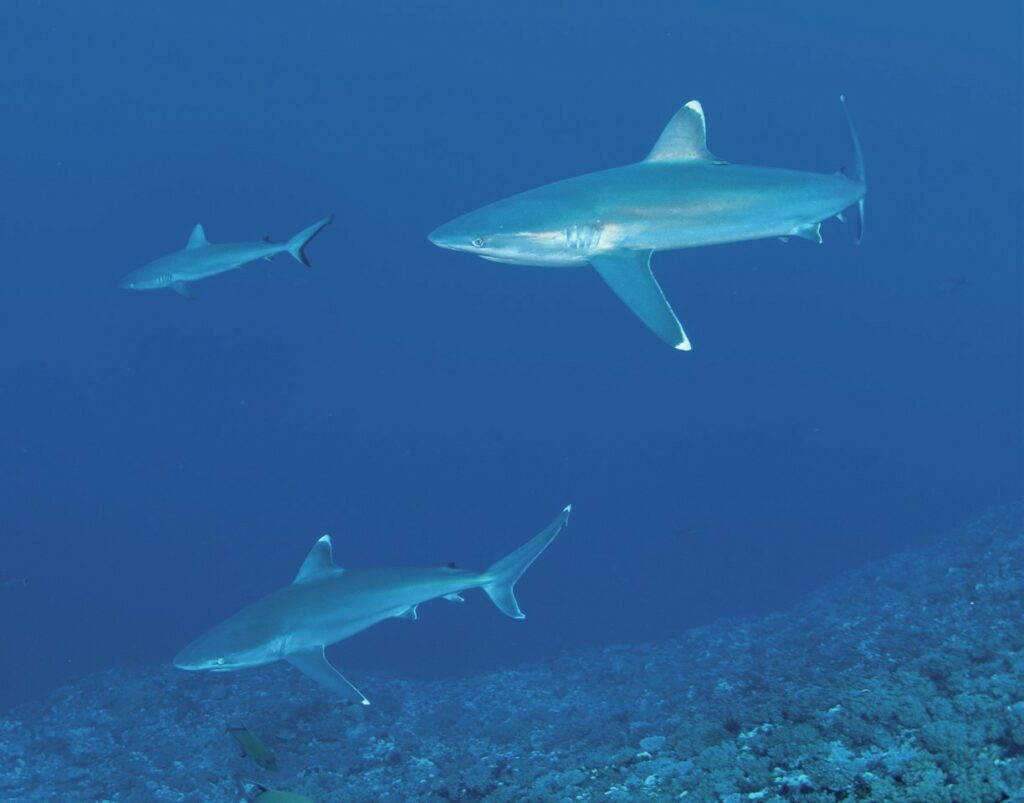
A glimpse of New Caledonia’s diving
Everyone else on the boat was from New Caledonia, and all told me that I hadn’t seen the best diving that New Caledonia had on offer. I heard tales of manta rays, turtles, spawning Napoleon wrasse, dugongs, photo-friendly sea snakes and abundant sharks that have grown used to being visited by divers.
Cherry on the cake – my buddies promised all these can be seen during a day-trip from Noumea! This article would grow too long if I included what they told me about Poindimie, Isle of Pines and the Loyalty islands!
I truly enjoyed the exploratory diving, but I can certainly see myself coming back to visit New Caledonia’s well-known dive sites.
For more images from Nicolas and Lena Remy visit their Website, Nicolas & Lena Remy Photography or follow them on Instagram and Facebook @nicolaslenaremy
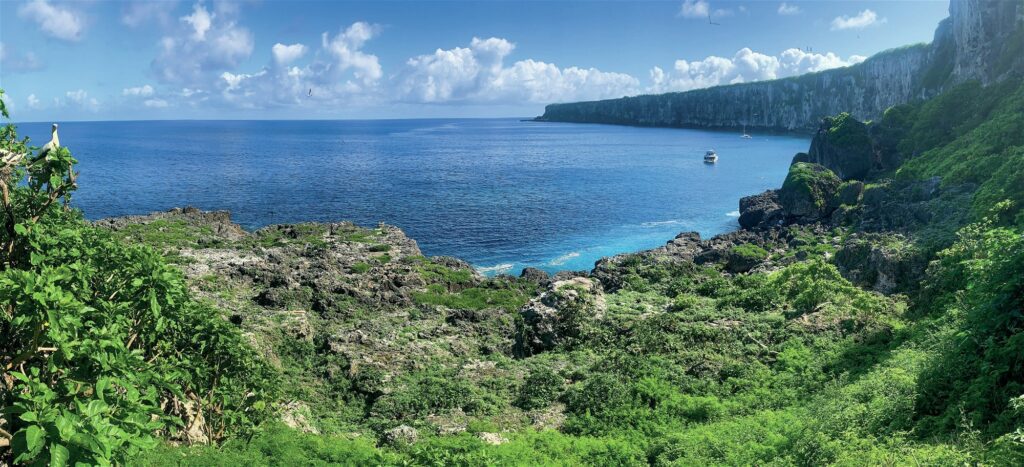
This article was originally published in Scuba Diver ANZ #58.
Subscribe digitally and read more great stories like this from anywhere in the world in a mobile-friendly format. Link to the article



